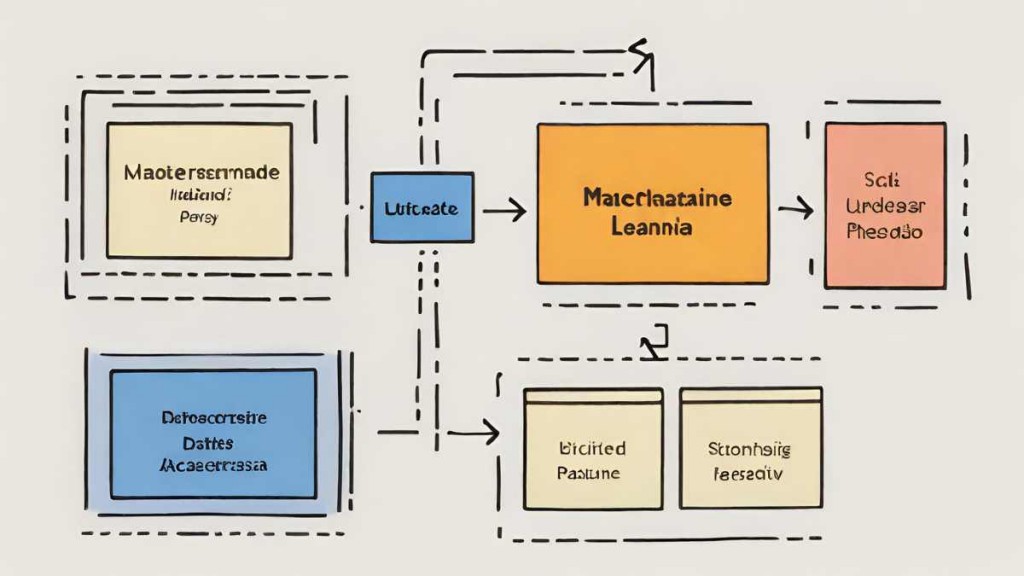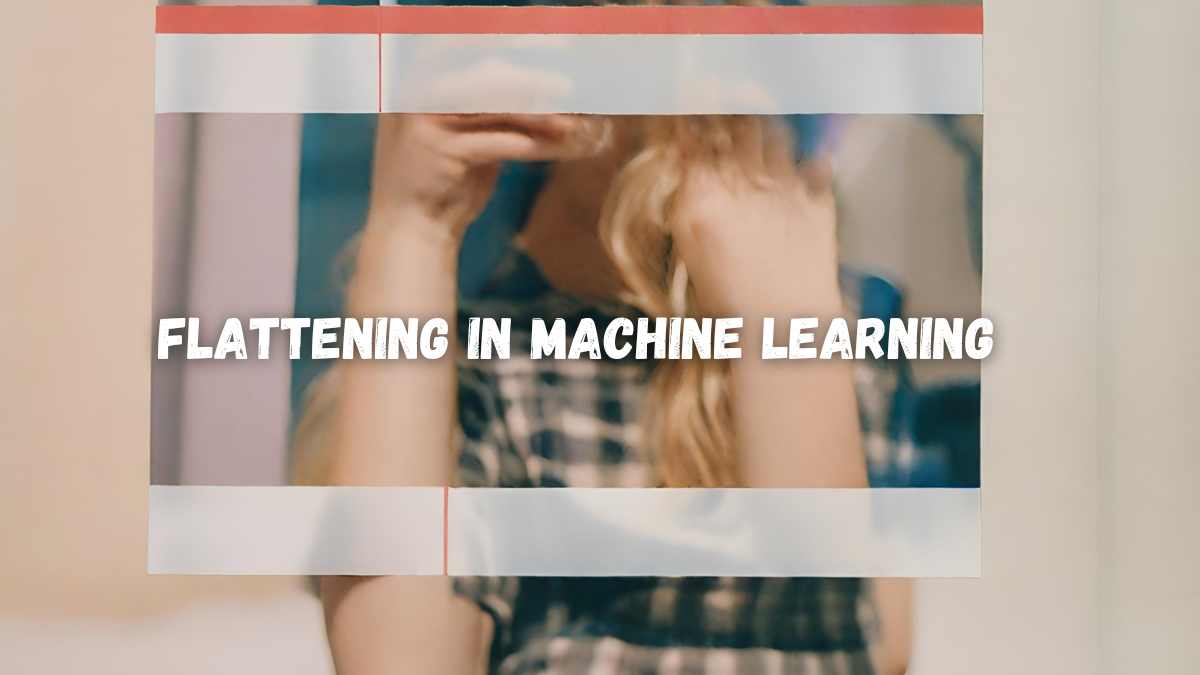Welcome to the enthralling world of Machine Learning, where data is the lifeblood that fuels the quest for artificial intelligence. At the heart of this quest is data preprocessing, a crucial step that ensures the quality of data feeding into machine learning models is pristine and primed for analysis. Preprocessing paves the way for cutting-edge algorithms to efficiently parse through information, unlocking patterns and insights that were once veiled in raw, unstructured data.
As we delve deeper into this discussion, one fundamental technique emerges as a linchpin for success: flattening. This process is instrumental in neural network optimization, allowing the intricate web of artificial neurons to communicate and learn from data more effectively. It turns the multidimensional mazes of data into streamlined, one-dimensional arrays that can be digested by neural networks, catalyzing their ability to evolve and make astute predictions.
Key Takeaways
- The indispensable role of data preprocessing in preparing datasets for machine learning.
- How flattening simplifies complex data, making it conducive for use in sophisticated models.
- Understanding flattening as a pivotal step in neural network optimization.
- Insights into enhancing algorithmic performance through a refined data structure.
- The significance of one-dimensional data in the efficiency of neural networks.
- Recognizing the transformative impact of flattening on multidimensional arrays.
Understanding the Basics of Machine Learning Data Preprocessing

The journey to harnessing the predictive power of machine learning begins with data preprocessing, a step of paramount importance to ensure the integrity and quality of data before it is fed into an algorithm. Preprocessing is akin to laying a solid foundation for a building; it is about creating a strong base for machine learning models to perform effectively.
Machine learning preprocessing includes a series of vital tasks such as data cleaning, data normalization, and feature scaling. These processes collectively aim to iron out any wrinkles in raw datasets, paving the way for sophisticated algorithms to detect underlying patterns with higher accuracy.
- Data Cleaning: This step identifies and corrects errors and inconsistencies to enhance the data’s quality. It involves filling in missing values, smoothing noisy data, and resolving discrepancies.
- Feature Scaling: Algorithms are sensitive to the scale of input data, which means that varying scales can disrupt a model’s learning path. By standardizing or normalizing features to a uniform scale, every attribute contributes equally to the end result.
- Data Normalization: A rescaling of the data to a range of [0, 1], normalization ensures that certain features do not dominate others due to their range, which could mislead the learning process.
To drive the point home, consider the impact of unscaled features in a dataset. If one feature has a range in the thousands while another is confined to single digits, the broader scale feature can unduly influence the model’s predictions. Feature scaling reels this in, placing each feature on an equal footing. Meanwhile, data normalization also supports this harmonizing effect, transforming the dataset into a common scale without distorting differences in the ranges of values.
There’s a pragmatic beauty to data preprocessing. It not only streamlines the learning process but also bolsters the accuracy of predictions—a twofold benefit making every effort in preparation wholly worthwhile. Without appropriate preprocessing, machine learning models may falter, leading to less reliable outputs. Professionals in the field regard these steps not as preliminary but as integral to building robust, precise models. Those committed to excellence in the realm of machine learning understand that preprocessing is not just a good practice—it is an absolute necessity.
The Role of Data Shaping in Machine Learning
In the realm of machine learning, the architecture of your data can be as crucial as the algorithms themselves. Proper data shaping not only enables a seamless alignment between data and algorithmic requirements but also propels machine learning efficiency to new heights. Feature engineering stands out as an essential component of data shaping, implicating the conversion of raw data into a dataset that’s primed for better model performance. Let’s explore the influence of data structuring on models and the importance of tailoring data to fit the needs of various algorithms.
How Data Structure Affects Model Performance
A well-structured dataset can significantly enhance the predictive accuracy of machine learning models. By engaging in thoughtful feature engineering, data scientists can introduce additional relevant information that facilitates better pattern recognition and decision-making within the model. The process may involve creating new features from existing ones or transforming variables to reflect necessary relationships. An adeptly shaped dataset captures the complexity and nuances of the underlying problems, promoting robust model performance.
Reshaping Data for Diverse Machine Learning Algorithms
Accommodating the stylistic demands of divergent machine learning algorithms is a must for any practicing data scientist. Decision trees may thrive with categorical data, while support vector machines require the data to be transformed in a manner that the separation boundary is clear. Likewise, neural networks demand data that aligns with their intricate layers and activation functions. To meet these needs, the art of reshaping data comes to the fore, ensuring that every model is fed with data in its most palatable format.
What is Flattening in Machine Learning?

In the realm of machine learning, the flattening process stands out as a pivotal step in preparing data for models, especially neural networks. This method involves the input layer transformation, where multidimensional arrays—such as images represented in two or three dimensions—are converted into a one-dimensional vector. This one-dimensional format is essential as it aligns with the architecture of neural networks, which require input data to be in a flat, linear form.
Not only does flattening make the data compatible with the input layer of neural networks, but it also plays a significant role in the broader machine learning data transformation landscape. By transforming the data into a single dimension, machine learning algorithms can process the information sequentially, simplifying steps such as feature extraction and classification.
| Before Flattening | After Flattening |
|---|---|
| Multi-dimensional data structures (e.g., matrices for images) | One-dimensional vectors suitable for input layers |
| Complex representation requiring specialized processing | Simplified, linear representation easing data handling |
| Localized and spatial data attributes | Global data attributes arranged sequentially |
The effectiveness of the flattening process is evidenced in numerous applications, most notably in fields that handle complex data forms like image recognition and natural language processing. By streamlining the input data, models can perform with greater accuracy and efficiency, ultimately leading to more reliable predictions and analyses.
- Improves compatibility with neural network layers
- Facilitates faster and more efficient data processing
- Enables ease of feature extraction and subsequent learning
As we continue to explore the depths of machine learning, it becomes clear that the arrangement and transformation of data are as critical as the algorithm itself. A well-executed flattening process can vastly improve the performance and functionality of a neural network, highlighting its indispensable place in the machine learning toolkit.
Key Reasons for Using Flattening in Neural Networks
When delving into the realm of neural networks and deep learning, data processing methods become crucial to achieving high-performance models. Flattening, a pivotal step in the transformation of data, serves as a bridge enabling multi-dimensional data to be interpreted effectively by neural network architectures. This process is particularly significant for feedforward neural networks, where the hierarchical structure of nodes benefits from streamlined data input.
From Multidimensional to Linear Data
The transformation from multidimensional arrays to a linear format is essential for compatibility with the input layer of neural networks. This is especially relevant in fields such as image and signal processing, where the intrinsic data is inherently complex and multi-dimensional. Flattening allows for this complexity to be reduced into a one-dimensional array, facilitating the efficient handling of data by the network.
Facilitating Learning in Fully Connected Layers
In the context of fully connected layers, which are the cornerstone of many deep learning models, flattening proves to be indispensable. It enables the intricate mesh of neurons to interact seamlessly, where every neuron in a layer is connected to all neurons in the preceding and subsequent layers, thus enhancing the model’s ability to learn from a vast array of features.
| Aspect of Data Processing | Before Flattening | After Flattening |
|---|---|---|
| Data Dimensionality | High (Multidimensional) | Low (One-dimensional) |
| Compatibility with Neural Networks | Limited | Optimized for Input Layer |
| Learning Capabilities in Fully Connected Layers | Reduced due to Excessive Complexity | Enhanced, Allows More Comprehensive Feature Analysis |
Unpacking the Flattening Layer: How It Works
Delving into the architecture of modern neural networks, particularly Convolutional Neural Networks (CNNs), reveals the intricate processes that allow these systems to interpret and learn from multi-dimensional input data. The flattening layer plays a crucial mediating role, transforming the high-dimensional outputs from the convolutional and pooling layers into formats suited for feature analysis and subsequent decision-making layers. Let’s explore the mechanics of the flattening layer and appreciate its importance in speeding up the feature extraction phase.
Diving into the Mechanics of Flattening
The flattening layer functions as an essential bridge within CNNs, converting data from a multi-dimensional array to a one-dimensional array without losing information pertinent to the learning task. By aligning the data into a vector form, the flattening layer ensures a smooth transition from the spatial exploration of the input image to the fully connected layers where traditional neural network processing occurs. This transformation facilitates the seamless mapping of complex spatial hierarchies and abstract representations into linear data accessible to the dense layers of the network.
Advantages of Flattening in Convolutional Neural Networks
Implementing a flattening layer delivers several performance benefits to CNNs. Notably, it enhances the network’s feature extraction capability, a key determinant of CNNs’ success in areas like image and video recognition, and medical image analysis. Moreover, the flattening layer enables CNNs to consolidate spatial features into a comprehensive feature vector that fully connected layers use to classify inputs with precision. As a result, it is pivotal in transforming the rich, spatial feature maps produced during convolutions into actionable insights within deep learning models.
Common Algorithms and Applications Requiring Flattened Data
Within the dynamic domain of machine learning algorithms, the transformation of data into a structure that is amenable to analysis and processing is paramount. Flattening is one such transformation that stands out, especially in tasks involving image classification and signal processing. These domains heavily depend on converting multi-dimensional entities into a single-dimensional array, often making flattening an indispensable step on the path to achieving high-performing models.
For instance, in image classification, each image, represented as a matrix of pixel values, must be flattened to create a feature vector. Similarly, signal processing applications usually involve transforming time-series data for models to discern patterns and make predictions. Here’s a glimpse into some of the common applications and algorithms that routinely employ flattened data:
- Convolutional Neural Networks (CNNs) for Image Recognition
- Recurrent Neural Networks (RNNs) for Sequencing Tasks
- Support Vector Machines (SVMs) in Face Detection
- Principal Component Analysis (PCA) for Dimensionality Reduction in Unsupervised Learning
- Autoencoders in Anomaly Detection
Understanding the crucial role of data flattening elevates the development of algorithms that can adeptly handle complex datasets. Below is a table that highlights specific applications alongside the corresponding algorithms that benefit from the process of flattening:
| Application Domain | Machine Learning Algorithm | Role of Flattening |
|---|---|---|
| Image Classification | CNNs | Transforming 2D image matrices into 1D vectors for feature analysis |
| Speech Recognition | RNNs/LSTMs | Converting audio signals into a series of sequential data points |
| Biometric Identification | SVMs | Reducing multidimensional scans to singular vectors for pattern identification |
| Data Compression | Autoencoders | Flattening is used in the encoding phase to reduce dimensionality while preserving information |
| Financial Time-series Analysis | Hidden Markov Models (HMMs) | Sequential flattening of time-series data for trend prediction |
In essence, the process of flattening acts as a catalyst in preparing raw data to meet the specific input requirements of different machine learning algorithms, thereby driving forward the efficiency and effectiveness of analytical endeavors across various applications.
Implementing Flattening in Python and Popular Machine Learning Libraries
As data preprocessing remains an essential phase in the machine learning workflow, Python flattening techniques have become increasingly fundamental for developers. With the rise of high-level libraries like NumPy, Pandas, TensorFlow, and Keras, manipulating multi-dimensional data into a compatible format for neural networks has never been more streamlined. In this section, we’ll delve into practical methods of implementing flattening in Python and how these processes are integral to machine learning code.
Flattening Data Using Numpy and Pandas
Python’s NumPy library is renowned for its efficient handling of arrays, and flattening is no exception. Utilizing the reshape or flatten method, developers can seamlessly convert multi-dimensional arrays into one-dimensional ones. Similarly, Pandas offers the capability to flatten data structures, thereby assisting in preliminary data transformation tasks, crucial for feature engineering.
Example: Using
numpy.ndarray.flatten()for transforming a two-dimensional array into a one-dimensional array for further machine learning application.
Flattening Layers in TensorFlow and Keras
In the realms of TensorFlow and Keras—powerhouses in the world of machine learning frameworks—flattening layers serve as a key component within neural network architectures. These frameworks provide built-in classes and methods to incorporate flattening layers that effortlessly prepare data for the fully connected layers, enabling intricate machine-learning code to execute with high efficiency.
Example: Employing
tensorflow.keras.layers.Flatten()to streamline the flow of data from convolutional layers to densely connected layers within a neural network model.
Comparative Overview: Below is a comparison of the procedures for implementing data flattening in various Python libraries:
| Library | Flattening Technique | Use-Cases |
|---|---|---|
| NumPy | ndarray.flatten() | General Array Manipulation |
| Pandas | DataFrame.stack() | Data Preprocessing |
| TensorFlow | tf.reshape() | Deep Learning Model Design |
| Keras | Flatten() | Neural Networks Layer Construction |
Best Practices for Flattening in Machine Learning Projects
As we delve further into the realm of machine learning, it becomes apparent that efficient data processing is a cornerstone for robust algorithmic performance. Flattening data, while a seemingly straightforward technique, is instrumental in simplifying complex data structures, thus enhancing machine learning optimization. Adhering to data-flattening best practices not only maximizes the potential of your models but also prevents common yet critical errors that can significantly derail your project’s success.
When and How to Flatten Data Properly
The judicious use of flattening can determine the accuracy and efficiency of your machine-learning models. Flattening should be implemented when transitioning between multi-dimensional data and layers that require one-dimensional input. In convolutional neural networks, for example, this often occurs before the fully connected layers. Best practices suggest that data should be flattened after all relevant features have been extracted and right before the fully connected layer to preserve essential information and maintain dimensionality that aligns with the expected output.
Avoiding Common Pitfalls with Flattened Data
Despite its benefits, the flattening process can lead to vexing setbacks if not handled with caution. One of the most prevalent pitfalls is the potential loss of spatial or temporal relationships within the data, which can impede the model’s ability to learn effectively from the data structure that is inherent to the problem it’s trying to solve. To circumvent this, practitioners should closely analyze the data to ensure that no critical information will be discarded during flattening. In essence, a thoughtful balance must be struck where the data is sufficiently streamlined for analysis without stripping away its meaningful complexities.
FAQ
What is the purpose of flattening in machine learning?
Flattening in machine learning is a data preprocessing step where multi-dimensional data arrays are transformed into one-dimensional arrays. This simplifies the dataset, making it suitable for processing by various machine learning models, particularly neural networks, and optimizing their performance.
Why is data preprocessing important in machine learning?
Data preprocessing is crucial as it prepares raw data for introduction into a learning algorithm. It involves techniques like feature scaling, data normalization, and data cleaning to enhance data quality, remove inconsistencies, and ensure that machine learning models can learn from the data more effectively.
How does the structure of data affect machine learning models?
The structure of data directly influences the predictive accuracy and performance of machine learning models. Properly structured data through processes like feature engineering enables algorithms to easily identify patterns, trends, and relationships, which is essential for making accurate predictions.
What role does flattening play in neural networks, specifically?
In the context of neural networks, flattening is used to convert multidimensional arrays into a flat, one-dimensional format. This is especially critical for the input layer of feedforward and convolutional neural networks (CNNs), where data needs to be in a format that matches the network’s input requirements for processing and effective feature extraction.
How is flattened data utilized in machine learning applications?
Flattened data is typically used in applications that deal with multi-dimensional data such as image classification and signal processing. Flattening this data into a one-dimensional array allows for compatibility with algorithms designed to handle linear data inputs, facilitating the learning and prediction processes.
What are some common techniques for flattening data in Python?
In Python, data can be flattened using libraries such as NumPy and Pandas. These libraries provide functions and methods that can reshape multi-dimensional arrays into one-dimensional ones efficiently, which is a common step in pre-processing data for machine learning algorithms implemented in frameworks like TensorFlow and Keras.
What are the best practices for flattening data in machine learning?
Best practices for flattening data include understanding the appropriate timing for flattening in your machine learning pipeline, knowing the dimensions required by the specific model you’re using, and avoiding over-flattening which might lead to loss of spatial or structural information that could be important for model training.
What should be avoided when working with flattened data?
When working with flattened data, it’s important to avoid common pitfalls like losing the structural context of features, which may result in poorer model performance. Ensuring that dimensionality is preserved correctly during flattening is crucial, as is comprehending how the flattened data will be used by the subsequent layers of a network.



